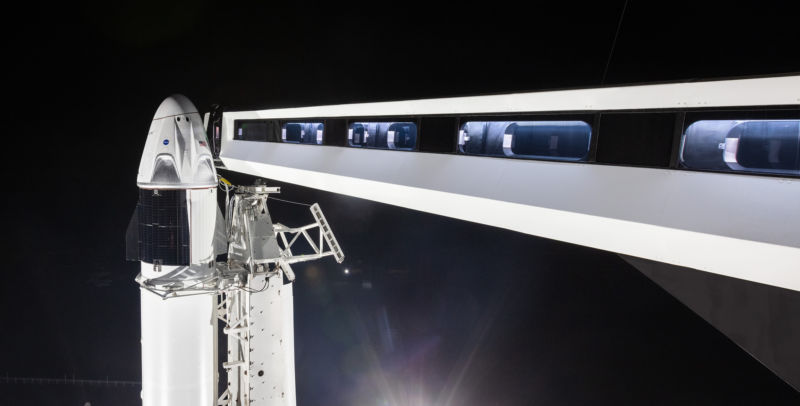
On Friday, key NASA officials gathered in a large meeting room at Kennedy Space Center. Here, for decades, NASA managers reviewed analyses about the next space shuttle mission and, more often than not, cleared the vehicle for launch. But after 2011, there were no more crew vehicles to review.
That changed this week when NASA convened a "flight readiness review" for SpaceX's Crew Dragon spacecraft for its initial test flight, without people on board. By Friday evening, the meeting was over and, among the NASA and SpaceX officials, the verdict was in—Dragon was ready for its demonstration mission as part of the commercial crew program on March 2. Launch time for the Falcon 9 rocket is 2:48am ET (07:48 UTC), from Kennedy Space Center. “I’m ready to fly," NASA's commercial crew program manager, Kathy Lueders, said succinctly.
The mood was ebullient among NASA leadership as well as SpaceX's top official on the scene, Hans Koenigsmann, the company's vice president of build and flight reliability. He, too, had participated in the flight readiness review in the storied room where so many shuttle meetings had been held. "It was a really big deal for SpaceX, and me personally," he said.
Crewed spaceflight has almost returned to the United States. This Demo-1 mission must launch successfully, dock to the International Space Station about 24 hours later, and then return to Earth a few days later under parachutes in lighted conditions. Provided this test goes well, and after SpaceX conducts an in-flight test of the capsule's escape system, the first crewed mission from Florida into orbit could take place later this summer from Florida.
NASA has waited a long time for this moment, since July, 2011, when the space shuttle made its final flight and the agency retired the venerable vehicles.
A real test
This will not be a pro forma test. Although Lueders and the other NASA officials are comfortable with the Falcon 9 rocket and Dragon spacecraft for this test flight, there are still some issues they want to close out before astronauts Doug Hurley and Bob Behnken launch into space on an identical rocket and capsule.
NASA is still gathering data about the rocket and spacecraft's composite overwrap pressure vessels, or COPVs, which are essentially bottles that store rocket fuels at extremely high pressures. Engineers also want to ensure that there is enough margin in the Dragon's parachutes for a safe landing under various conditions, and study some concerns about the propellant feed system in the Dragon spacecraft. Finally, a mannequin will fly inside the vehicle during the test flight to determine stresses on humans during the flight.
"The vehicle is not totally qualified for a crew flight, but we know the hardware is good enough for this flight," said Bill Gerstenmaier, NASA's chief of human spaceflight. "We expect to learn some things. We want to maximize our learning."
One outstanding issue
In regard to the March 2 launch date, Gerstenmaier cited only one outstanding issue having to do with software related to the vehicle's approach to the International Space Station. Normally, an autonomous vehicle will have a primary computer system to control its flight, and a separate, isolated box to handle this function if the main computers go down. The Crew Dragon doesn't have this function.
Russia, NASA's main partner on the station, has raised concerns about this, noting that if this system goes out the spacecraft might drift and crash into the station. Gerstenmaier said he believes that NASA has a "sufficient rationale" for the Dragon's computer system as is, and that he expects to work the issue out with Russian officials this week, before the launch.
The station has a busy schedule in March and April, so there is a fairly narrow margin for getting this flight off the ground. The next Russian Soyuz crew launch is scheduled for March 14, and then there are three spacewalks and two cargo missions in late March and April. Anticipating potential weather or technical issues, SpaceX should have three opportunities to launch between March 2 and March 9, but if it misses this window it's not clear when the company would have another attempt.
https://arstechnica.com/science/2019/02/dragon-aces-final-nasa-review-now-set-for-test-flight-on-march-2/Bagikan Berita Ini














0 Response to "Dragon aces final NASA review, now set for test flight on March 2 - Ars Technica"
Post a Comment